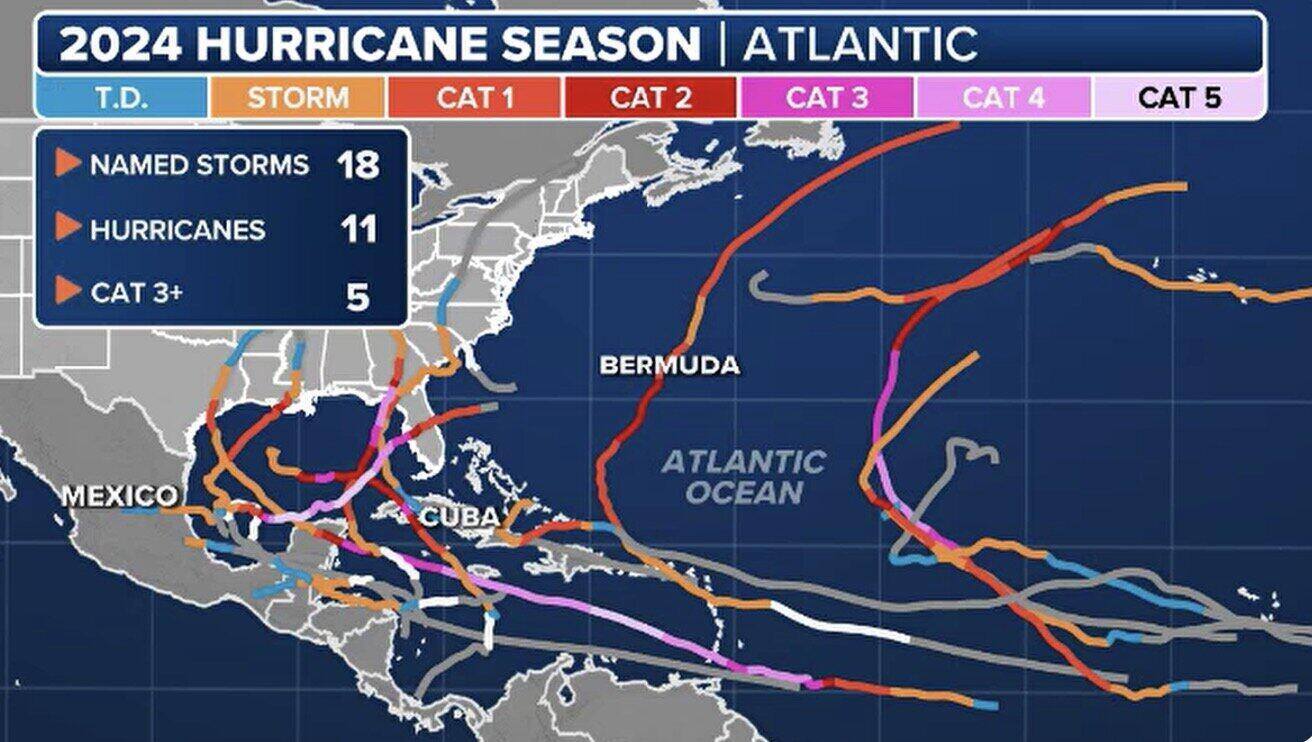Euronews reported that according to European scientists, 2024 will certainly be the hottest year on record and the first year that the global average temperature exceeds the Paris Agreement target of 1.5 degrees Celsius compared to pre-industrial times.
Analysis of World Meteorological Organization data shows that the 2024 temperature spike was partly driven by El Nino. In 2025, La Nina could bring global temperatures down. But 2025 is still likely to be one of the three hottest years on record, the UK's weather and climate agency, the Met Office, has warned.
The World Meteorological Organization (WMO) said that La Nina could appear between November 2024 and February 2025. But the cooling effect of La Nina on global temperatures could be “weak and short-lived”.
“Since June 2023, we have seen an exceptionally long-lasting sequence of rising sea and land surface temperatures across the globe. Even a short-term cooling event like La Nina will not change the long-term trajectory of rising global temperatures due to greenhouse gases trapping heat in the atmosphere,” said WMO Secretary-General Celeste Saulo.
In fact, meteorologists are predicting extremely high temperatures in 2025, even with the possibility of a La Nina. “Years that are not dominated by the warming influence of El Nino, like 2025, are generally cooler. 2016 was an El Nino year and was the warmest year on record globally at the time. However, 2016 is now looking very good compared to our forecast for 2025,” warns Professor Adam Scaife, head of global forecasting for 2025 at the Met Office.
In its forecast for major weather events in 2025, Fox Weather points out that climate models have predicted La Nina in the central and eastern Pacific Ocean for most of 2024. However, the slower-than-expected La Nina development has led climate experts to question the likelihood of an El Nino in 2025.

The US National Oceanic and Atmospheric Administration (NOAA) estimates that the possibility of El Nino forming between January and March 2025 is only 1%, with the probability of El Nino appearing in the summer increasing to 20%.
The likelihood of an El Niño developing continues to increase, but there is no guarantee that it will occur in 2025. Overall, neutral conditions are forecast to prevail for most of 2025, potentially leading to less extreme weather patterns.
The Atlantic hurricane season began on June 1, 2025, and runs through November 30. During the 2024 season, 18 named storms formed, of which 11 strengthened into hurricanes and 5 became major hurricanes in the Atlantic. An average Atlantic hurricane season typically has 14 named storms, 7 hurricanes, and 3 major hurricanes.
Several years of neutral ENSO conditions have led to intense hurricane seasons. However, hurricane forecasters point out that if El Niño returns in 2025, hurricane activity will decline. However, there is no indication from long-term climate models that the Atlantic basin will have a below-normal 2025 hurricane season.











